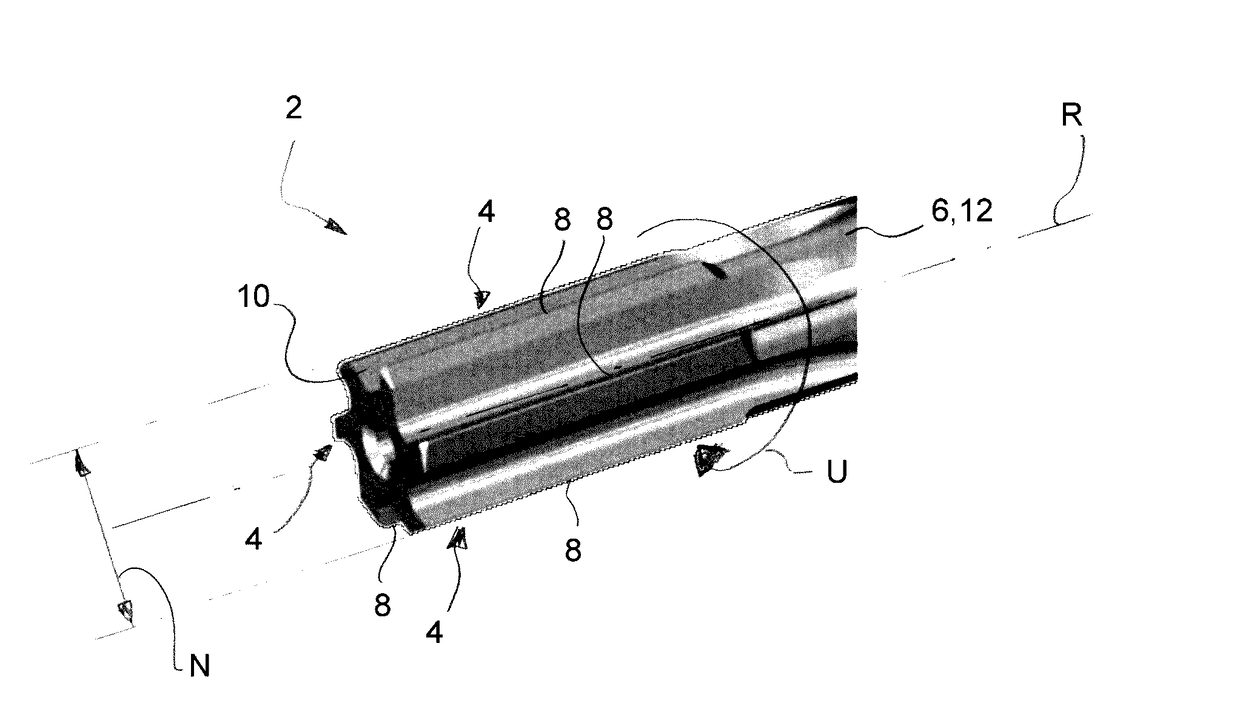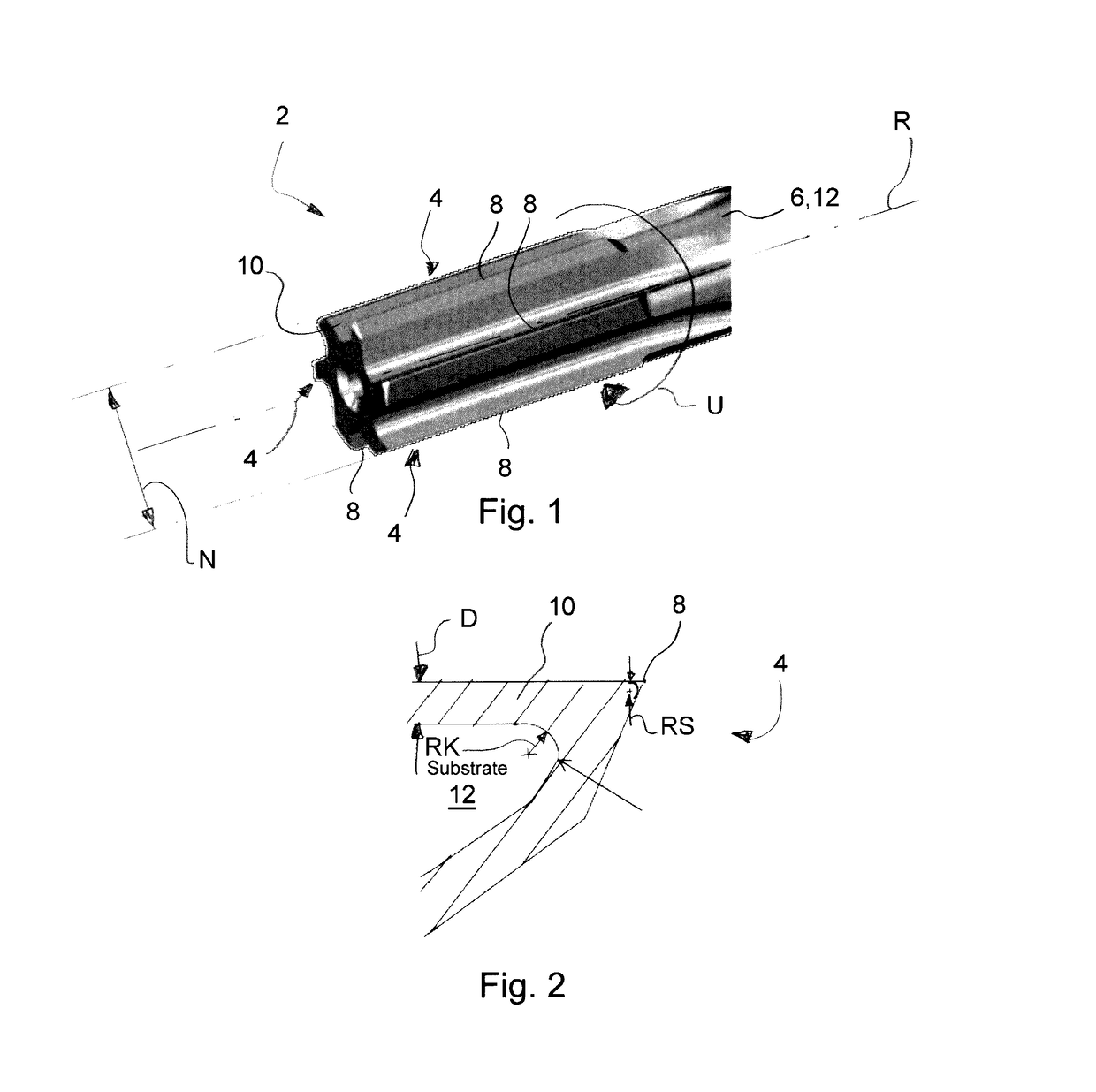Cutting tool and method for its manufacture
a technology of cutting tools and cutting edges, applied in the field of cutting tools, can solve the problems of increasing susceptibility to cracking, cutting edge abraded, cutting tools worn down in the cutting edge region, etc., and achieves the effect of improving the sharpness and quality of the cutting edge, improving the precision of the cutting edge coating and positioning, and adjusting the radial position of the cutting edg
- Summary
- Abstract
- Description
- Claims
- Application Information
AI Technical Summary
Benefits of technology
Problems solved by technology
Method used
Image
Examples
Embodiment Construction
[0019]Generally, the cutting tool comprises a base body or support, on which the cutting region is arranged or formed. In a first variant, the cutting tool is designed as one piece and the base body constitutes the substrate for coating. Prior to coating, cutting regions are then typically ground, for example, into this base body. In a second variant, one or more cutting regions are secured, e.g. soldered or adhesively bonded, on a base body, or alternatively they are secured on a support so as to be removable, as cutting inserts or cutting plates within the meaning of a modular tool. The cutting regions are then coated before or after the mounting on the support or base body and sharpened before or after the mounting.
[0020]The cutting region is thus that part of the cutting tool in which the cutting edge is formed. In doing so, the cutting tool can also comprise several cutting regions in which at least one cutting edge is respectively arranged.
[0021]The substrate generally compris...
PUM
| Property | Measurement | Unit |
|---|---|---|
| edge radius | aaaaa | aaaaa |
| edge radius | aaaaa | aaaaa |
| cutting edge radius | aaaaa | aaaaa |
Abstract
Description
Claims
Application Information
 Login to View More
Login to View More - R&D
- Intellectual Property
- Life Sciences
- Materials
- Tech Scout
- Unparalleled Data Quality
- Higher Quality Content
- 60% Fewer Hallucinations
Browse by: Latest US Patents, China's latest patents, Technical Efficacy Thesaurus, Application Domain, Technology Topic, Popular Technical Reports.
© 2025 PatSnap. All rights reserved.Legal|Privacy policy|Modern Slavery Act Transparency Statement|Sitemap|About US| Contact US: help@patsnap.com


